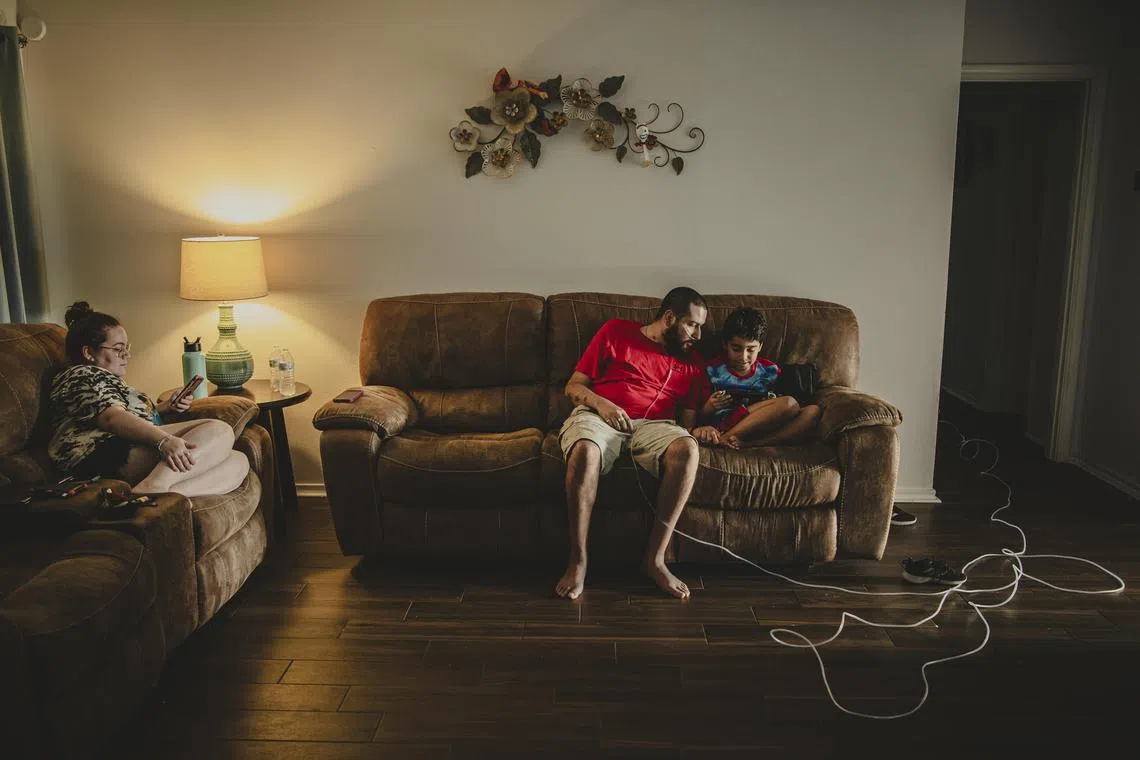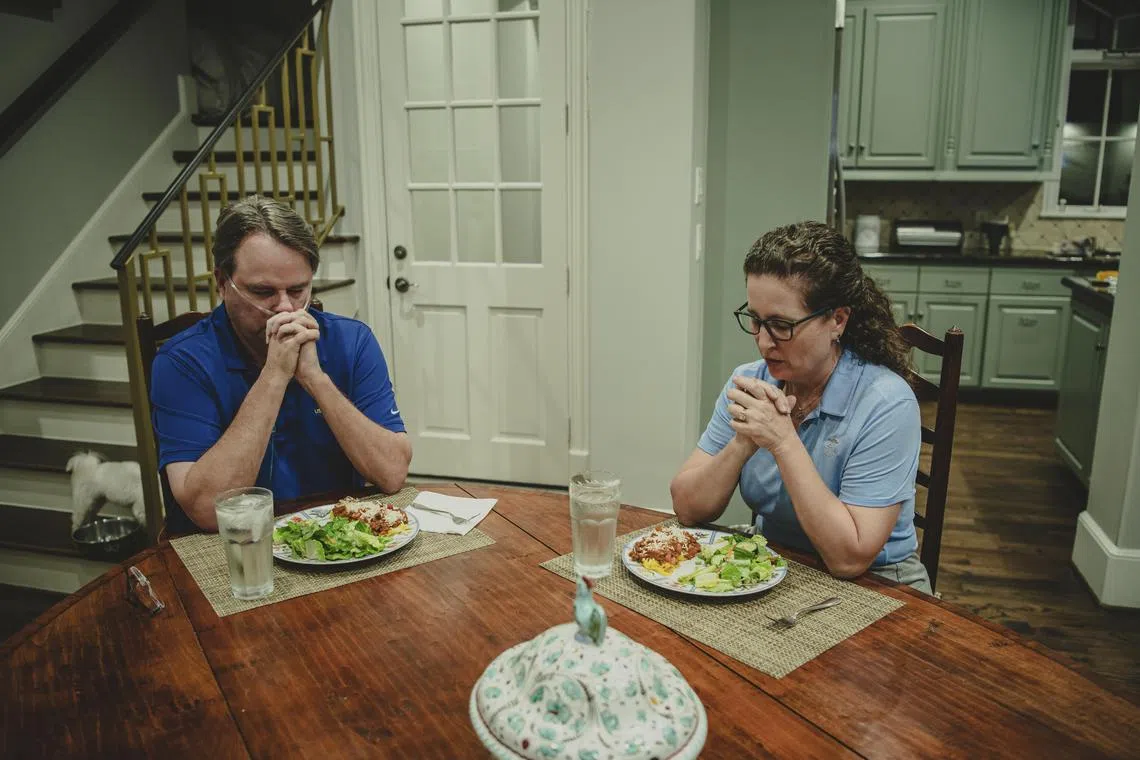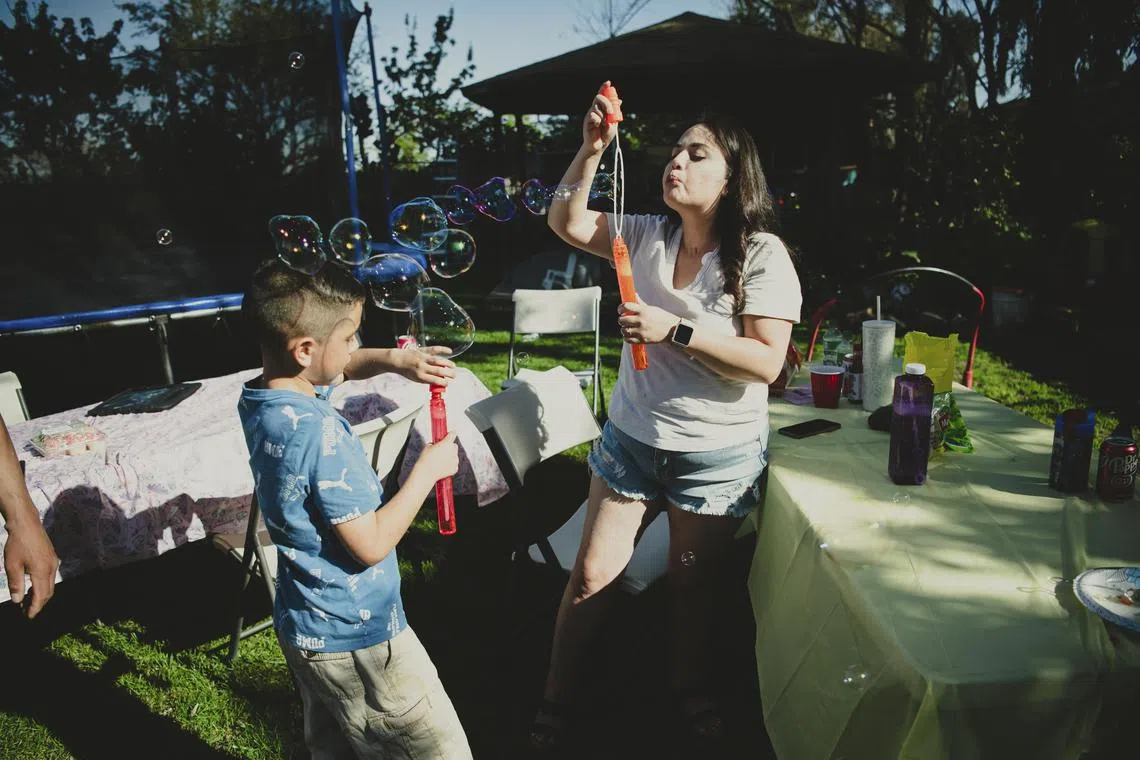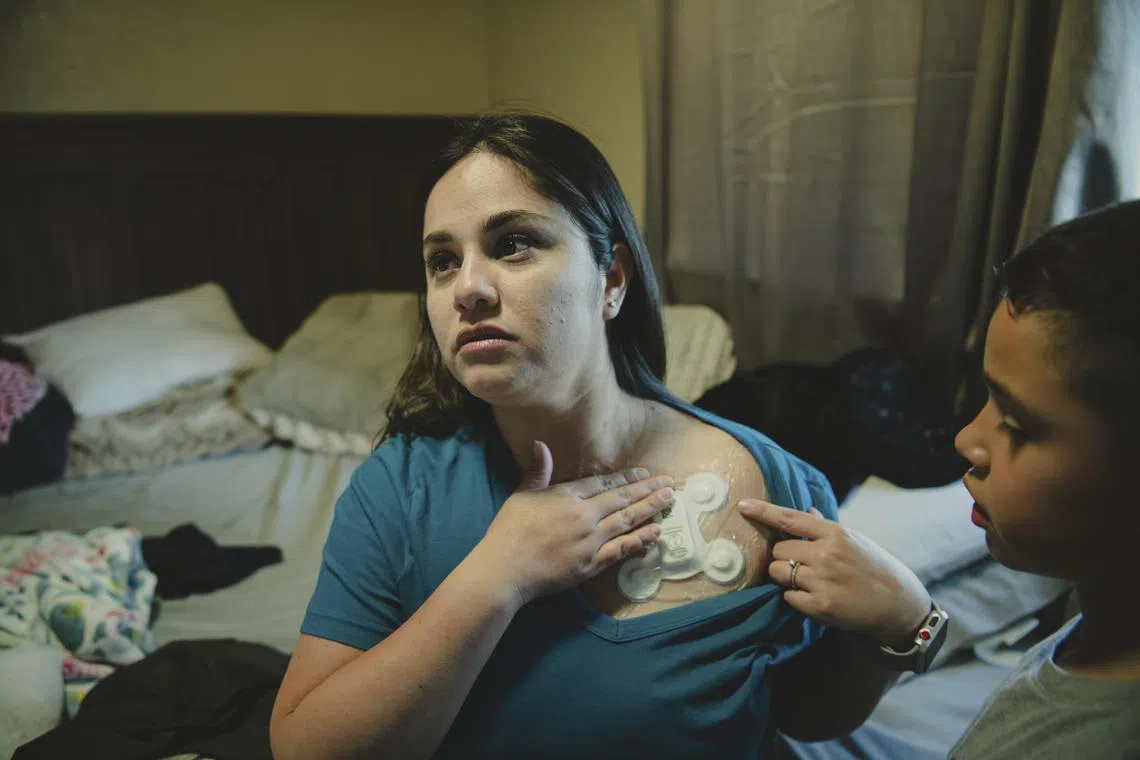An inside look at Covid-19’s lasting damage to the lungs
Sign up now: Get ST's newsletters delivered to your inbox

Mr Andy Munoz (centre) spent over six months on an ECMO machine after he contracted Covid-19 in July 2021.
PHOTO: NYTIMES
Follow topic:
WASHINGTON – More than three years after the start of the pandemic, many Covid-19 survivors continue to struggle. Some, especially those who became so severely ill that they were hospitalised and unable to breathe on their own, face lasting lung damage.
To better understand the long-term impact of Covid-19’s assault on the lungs, The New York Times spoke with three patients who were hospitalised during the early waves of the pandemic, interviewed doctors who treated them and reviewed CT scans of their lungs over time.
One patient spent time connected to a ventilator; the other two were so debilitated that they required months on a heart-lung bypass machine called ECMO. These patients were not yet vaccinated – for two, vaccines were not available, and the third had planned to get vaccinated but was infected before he could.
The Times analysed hundreds of millions of data points from the patients’ scans to reconstruct their lungs in 3D. The resulting visualisation offers a vivid, visceral picture of damage that can linger years after infection and irrevocably alter everyday life.
Mr Andy Munoz, 36, of La Porte, Texas, was a welding inspector who enjoyed kayak fishing before he contracted Covid-19 in July 2021. He spent more than six months on an ECMO machine.
“These lungs are not capable of sustaining life” is how Dr Howard Huang, who treated Mr Munoz at Houston Methodist Hospital, described a lung scan taken six weeks after Mr Munoz was infected. “You look at this, and you wonder: is this ever going to get better?”
A second scan, taken two months later, showed slight improvement, and the lungs appeared closer to normal size. “It’s not shrivelled up as much,” Dr Huang said.
Sixteen months after his infection, Mr Munoz’s lungs had recovered somewhat, but not completely.
For some patients, the lung damage was less extreme but still left its mark. Mr Tom Kennedy, 59, a lawyer for an industrial services company, was hospitalised with Covid-19 in November 2020.

Mr Tom Kennedy, who was hospitalised with Covid-19 in November 2020 for about 80 days, prays with his wife, Gayle, before dinner in their home in Houston.
PHOTO: NYTIMES
Mr Kennedy, who lives in Houston, was hospitalised for about 80 days. He was in intensive care for about a month and on a ventilator for about 15 days. “I remember doing everything I could to draw one more breath,” he said.
Ms Marlene Rodriguez was 34 weeks pregnant when she contracted Covid-19 in December 2020. Her water broke 10 days later, and doctors delivered a healthy baby by caesarean operation. But Ms Rodríguez’s condition worsened.
Unable to breathe, Ms Rodriguez required two months on ECMO. She developed a pneumothorax – air trapped between the lung and chest wall – on each side. The air needed to be drained to prevent lung collapse.
“She was maximally sick,” said Dr David Sayah, who treated her at UCLA Medical Centre. Ms Rodriguez, 32, of Atwater, California, once home, required supplemental oxygen for 14 months, but has not needed it since.
Ms Rodriguez can accomplish most daily activities 2½ years after her infection, but she becomes breathless and wheezes when she carries her toddler daughter or does chores such as mopping the floor. She uses an albuterol inhaler for tiring tasks such as climbing stairs.
“She doesn’t have a lot of lung to give,” Dr Sayah said. “She’s certainly at risk for ending up in more trouble if she does have additional respiratory issues in the future.”

Ms Marlene Rodriguez (right), who was on an ECMO machine for two months after contracting Covid-19 in December 2020, no longer needs supplemental oxygen. But she still becomes winded lifting heavy items or doing taxing activities like climbing stairs.
PHOTO: NYTIMES
All three patients were listed as candidates for lung transplants, an option doctors hope to avoid because patients require immunosuppressive drugs and often die within five to 10 years after transplant. Now, doctors say Mr Kennedy and Ms Rodriguez probably will not need transplants but Mr Munoz may need one eventually.
In some ways, these patients have made better progress than doctors would have predicted. “We’re seeing examples where people do improve, even though they started out with a terrible-looking CT,” Dr Huang said. But they’re unlikely to recover fully. “I don’t think anybody gets off completely scot-free if they’re that sick with Covid-19,” he said.
Ms Rodriguez did not meet her newborn daughter, Vianney, until she was removed from the ECMO machine, 2½ months after the baby was born.

Like Ms Marlene Rodriguez, many Covid-19 survivors still continue to struggle.
PHOTO: NYTIMES
She briefly returned to work as a receptionist at a plant nursery, but after getting laid off and trying another job, she and her husband Jose – who has a chronic medical condition – decided, for health and financial reasons, to move in with his parents. Now, she spends her days caring for her three young children.
“I don’t feel the same as how I used to,” she said. She becomes winded when lifting heavy items or doing vigorous activities, and a second Covid-19 infection recently has increased her fatigue and shortness of breath. She has experienced back pain and takes anxiety medication.
Still, it is “one of the most remarkable recoveries”, Dr Sayah said. “I don’t mean to imply that she’s recovered normal lung function, but when the expectation was that this person would for sure die without a lung transplant, to go from death to living at home without supplemental oxygen is a huge sort of success.”
Today, with coronavirus vaccines, antiviral treatments and other developments, doctors say they encounter few patients who are so severely afflicted. But they worry about those who wrestle with Covid-19’s enduring effects.
“People think that it’s kind of a one-and-done thing, like you can get over it like a common cold,” Dr Huang said. “We’re left with a population of people like this that are kind of in this limbo state.” NYTIMES

